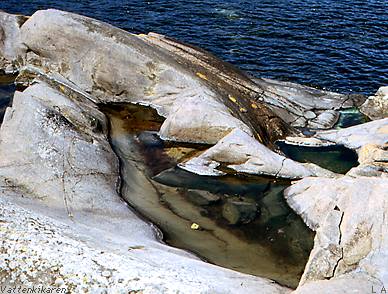 |
|
Freshwater and saltwater
Salt
content in the oceans is quite stabil, about 3,5 %. On rare occasions, the
salt content in the surface water can reach this level along the Swedish
west coast, but usually the saltier and heavier water is found deeper under
a layer of fresher water. The salt content also decreases the closer to
land one comes, this is especially true in areas with high fluvial runoff
such as estuaries. Salt content can also vary between different micro-environments.In
rock pools, the salt content can be very low and those that are positioned
higher up the beach never attain a level as high as in the rock pools lower
down. There are also very expansive salt content gradients, extending from
the Gulf of
Bothnia to the Skagerrak. 
In those salt gradients with the lowest salt
content, most Marine organisms canot survive. Here, only Marine organsisms
that have the ability to endure low and fluctuating salt content exist.
Variations amongst the fauna is low, but populations and total weight of
can be very high.
 |
Page 36 of
52 |
 |
|



